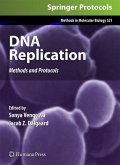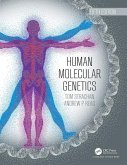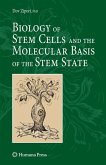Master's Thesis from the year 2014 in the subject Biology - Genetics / Gene Technology, grade: 1.0 (A+), LMU Munich (Department Biologie II), language: English, abstract: DNA replication is a fundamental biological process responsible for accurate duplication of genetic information necessary for its faithful inheritance to the two daughter cells. Despite much effort, the underlying mechanisms controlling this process are not fully understood. In order to accommodate very large and complex genomes, replication dynamics in eukaryotes evolved to become controlled by major epigenetic mechanisms. Moreover, the spatio-temporal organization of S-phase progression changes throughout cell differentiation and development. The study of genome duplication has been largely hindered by the lack of appropriate monitoring techniques, and any comprehensive understanding ultimately requires quantitative approach.In this master's thesis, we analyzed replication patterns in mouse somatic and embryonic stem cells (mESCs) with newly developed three-dimensional structured illumination microscopy (3D-SIM) to register the progression of S-phase in more detail than previously described. We successfully established an automated workflow to produce reliable and reproducible replication foci (RF) counts in C2C12 cells from 3DSIM data and TANGO (Tools for Analysis of Nuclear Genome Organization). Such an approach has not been described before, and could be used to evaluate further cell types and schemes.We observed significant differences in replication timing and progression between somatic (C2C12, C127) and mESCs (HI5). In this report we show that in mESCs S-phase lasts significantly longer (15 h), with a 'leaky' chromocenter replication profile compared to somatic cells. Furthermore, differentiated HI5 female mESCs into epiblast-like cells (EpiLCs) exhibit inactive X chromosome and differential replication timing of Xi within two distinct EpiLC populations, and a much shorter S-phase (10 h).As a final aim of this work, we interfered with specific histone modifications with inhibitors and knockout cell lines. Inhibition of EZH2 methyltransferase resulted in global reduction of H3k27me3 levels in both somatic and mESCs, however replication dynamics were not affected. In contrast to somatic cells, viability of mESCs in presence of inhibitor was greatly reduced, suggesting a more important role of H3K27me3 in mESCs. Suv39H1/H2 double knockout mESCs had no observable effect on replication dynamics or proliferation. Moreover, differentiation of these cells into EpiLCs resulted in a distinct S-phase progression, with replication resembling HI5 EpiLCs.








